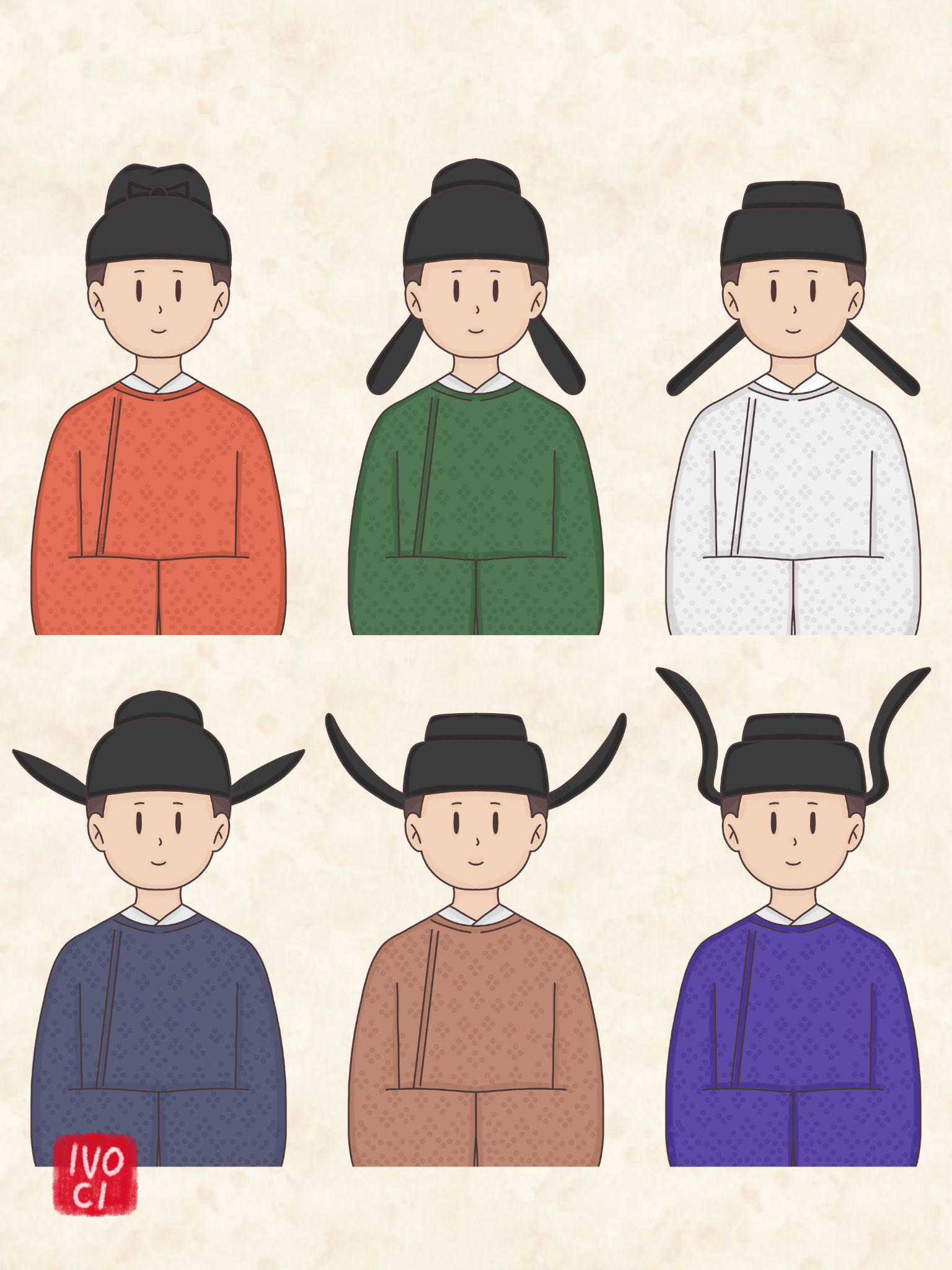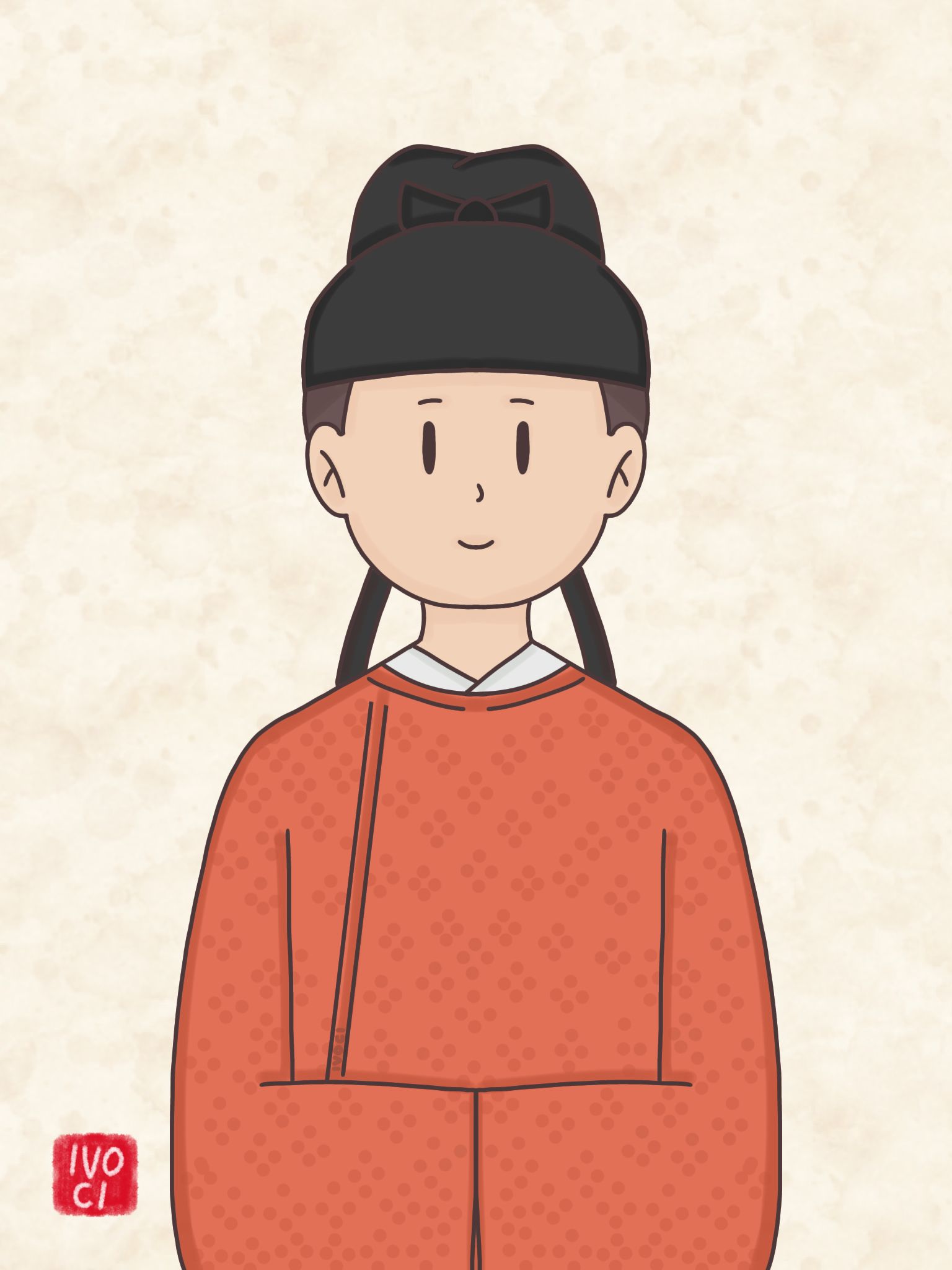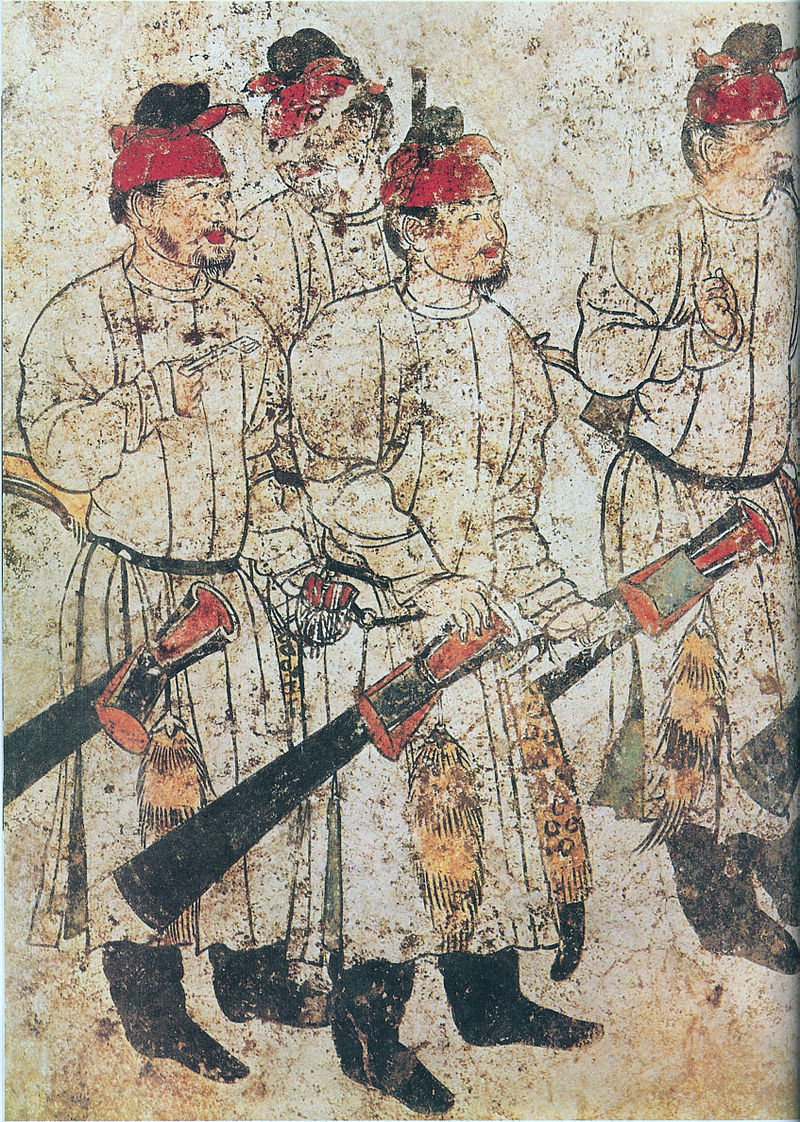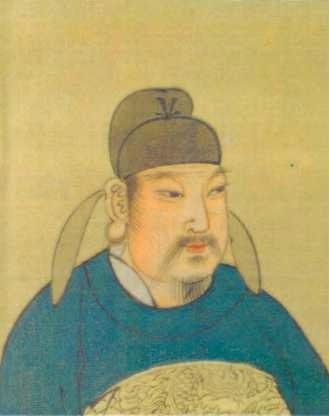
*The color of the yuanlingpao (clothes) in the illustrations is not necessarily according to history
Read about Futou in general: Futou 幞头, Ancient Chinese Headwear
During the three hundred years from the beginning of the Tang dynasty to the end of the Tang dynasty, futou wings were added and bent into various fixed shapes.
The late Sui dynasty to the early Tang dynasty were the periods when Futou (Chinese: 幞头 ; pinyin: fú tóu) became popular.
At the beginning of the Tang dynasty, most of them followed the old system of the previous dynasty, Li Shimin adopted Minister Ma Zhou’s suggestion and popularized futou throughout the country.
The bulge on the top of the futou is not obvious but compared to the futou in the Northern Zhou and Sui dynasties, the shape of the futou is more in the early Tang dynasty.
In the early Tang dynasty, futou was made of light and soft gauze, and they were called Ruanjiao Futou.
From the early Tang dynasty to the middle Tang dynasty, futou came in many types and shapes, futou tops and wings varied, but were mostly soft-wrapped.
After the beginning of the Tang dynasty, the two wings hanging behind the head gradually lengthened. The long-wing style originally came from the palace and was mostly gifted by the emperor.
In the mid-Tang dynasty, the wings became shorter, some even turning the wings up.
Some people tuck the futou wings into a knot behind the head and open the two corners from the sides for decoration.
In the mid-Tang dynasty, there were also hard-wrapped and hard-winged futou, which were easy to put on and take off without being tied, similar to the shape of the soft-wrapped futou of the same period.
Compared with the futou popular in the Five Dynasties and Song dynasty, it is slightly smaller and has a style of inheriting the past and opening up the future.
In the late Tang dynasty, hard-wrapped heads with hard wings were popular. That is, cloth-like fabrics and silk were attached to the wings, and iron wire, copper wire, and bamboo wire were added to the frame of the futou and the wings.
To beautify the futou surface, people also paint the surface cloth.
Later, the inner cloth gradually disappeared, leaving only the outer lacquered shell, and the wings tied in front of the forehead were mostly used for decoration or discarded.
This change greatly changed the structure of the futou and made it easier to put on and take off.
The two futou wings began to change from their original practical function to a decorative function and had a huge impact on the way of wearing the futou.
a. Ruanjiao Futou (Chinese: 软脚幞头 ; pinyin: ruǎn jiǎo fú tóu) – Futou with soft wings
Ruanjiao futou was a typical type of futou in the Tang dynasty and was an important precursor to the futou developed in later dynasties.
Sometimes, 2 or 4 long narrow ribbons are tied behind the futou and left to hang freely behind the wearer.
b. Zheshang jin (Chinese: 折上巾 ; pinyin: zhé shàng jīn) – Handkerchief folded up
A type of ruanjiao futou consisting of a square piece of cloth wrapped around the head, the two ends of the cloth then tied at the back on either side of the neck and then wrapped around the head before being tied together over the forehead.
c. Chuijiao Futou (Chinese: 垂脚襆头 ; pinyin: chuí jiǎo fú tóu)
Black hat with two wings that droop down.




Leave a Reply